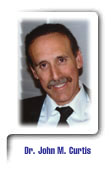 |
|||||||
|
|||||||
|
"Zero Dark Thirty's" Story of Bin Laden's End by John M. Curtis Copyright
Jan. 10, 2012
Sony-Columbia
Pictures’ “Zero Dark Thirty” was the next installment from 61-year-old Academy
Award-winning director Kathryn Bigelow, whose 2010 Best Director and Picture
Award for “The Hurt Locker” put her into elite Hollywood company, right next to
her “Titanic”-famed ex-husband James Cameron.
Tackling the hunt for Osama bin Laden was no easy feat, even for the
mega-talented Bigelow, trying her best to repeat the same magic seen in “The
Hurt Locker.” While defusing
Improvised Explosive Devices [IEDs] in “The Hurt Locker” provided
edge-of-the-seat suspense, Bigelow’s task was more complex telling a long and at
times tedious story of the 10-year hunt for the world’s most dangerous
terrorist: Osama bin Laden. “Zero Dark Thirty,” the military term for 30-minutes past midnight, follows a young CIA
agent Maya [played by Jessica Chastain] in her quest to crack the Bin Laden
case.
Bin Laden, credited with the Sept. 11 terrorist attack that downed the
World Trade Center Twin Towers and destroyed part of the Pentagon, disappeared
off the radar about Nov. 16, 2001, only three days after the Taliban were driven
from Kabul. While former President
George W. Bush tried his best to get Bin Laden when he escaped on motorbikes
with Taliban’s Mullah Mohammed Omar over Afghanistan’s Khyber Pass through Tora
Bora Dec. 14, 2001, Bin Laden eluded capture until killed by Navy Seals Team-Six
May 1, 2011. Much of “Zero Dark Thirty” tracks Maya’s connection with CIA
interrogator Dan [played by Jason Clarke], hoping to extract actionable
intelligence through “enhanced interrogation techniques,” including sleep
deprivation and “waterboarding.”
U.S. officials, including ranking member of the Senate Armed Services Committee
Sen. John McCain (R-Ariz.), reject the film’s premise.
“Zero Dark Thirty” suggests strongly a connection between “enhanced
interrogation techniques,” AKA torture, and tracking down Bin Laden’s courier to
his fortified compound in Abbottabad, Pakistan.
Working non-stop often without sleep, Maya puts the disparate pieces of
intel together to finally track down the 50-something terrorist to his remote
hideout. What McCain and Senate
Intelligence Committee Chairman Sen. Diane Feinstein (D-Calif.) reject is that
the Guantanamo Bay “enhanced interrogation” of Khalid Sheikh Mohammed—or any
other detainee—did not lead the CIA to Bin Laden’s 33-year-old courier Abu Ahmed
al-Kuwaiti. If Bigelow and her
co-writer Mark Boal’s screenplay were really so off-base, the White House, CIA
or any other government agency would have filled in the gaps. From the movie’s perspective, it was
Maya’s tenacity that led to Bin Laden.
Without giving the missing details, the official U.S. version of events
that led to Osama bin Laden involved tracking down al-Kuwati to Bin Laden’s
Abbottabad compound. Whether or not
“enhanced interrogation techniques,” defined by the 1949 Geneva Convention as
torture, led to the actionable intelligence is anyone’s guess. U.S. officials deny that torture
coaxed out the name of Bin Laden’s courier, eventually leading to his
whereabouts. Bigelow and Boal made every effort to stick to known facts about how the single-minded
focus of a female CIA agent led to Bin Laden.
If the government has other relevant information other than “enhanced
interrogations” they should come forward with the facts. “Zero Dark Thirty” does a brilliant
job of telling the official government story, without taking a position on the
moral appropriateness of “enhanced interrogation techniques.”
Unlike the natural suspense of “The Hurt Locker,” the tedious and
frustrating nature of the Bin Laden hunt left the middle part of the film
dragging, though Bigelow does a masterful job of keeping the film moving with
clever editing, various camera angles, close-ups and hand-held camera work. Chastain’s performance conveys
Maya’s relentless pursuit of Bin Laden, putting former President George W.
Bush’s Sept. 20, 2001 words to a Joint Session of Congress into action: “We will not tire. We will not falter. And we will not
fail,” Bush told the nation still shocked by Sept. 11. While Bush was not able to claim Bin Laden’s head, it took 10 long years and a new
president to finally redeem his promise after Sept. 11. Chastain’s performance should
warrant an Oscar nomination, despite the lack of character development in
Bigelow and Boal’s screenplay, maybe the weakest part of “Zero Dark Thirty.”
“Zero Dark Thirty,” while not meeting or exceeding Bigelow’s 2009 “The
Hurt Locker,” tells a compelling story of the world’s most intense manhunt. Without enough depth into Maya’s
character, Bigelow and Boal still convey the dedication, single-minded focus and
intense commitment needed to attain the nearly impossible goal of getting Bin
Laden. Perhaps Maya’s stoic pursuit
of Bin Laden without any reference to her history or own needs conveys the
one-dimensional focus required of dedicated CIA operatives tasked with
protecting U.S. national security.
While it’s easy to criticize Bigelow’s film, the U.S. government hasn’t filled
in any gaps of unanswered questions about what led to Bin Laden’s death. While the CIA gets all the credit,
there’s a virtual black out of the role Pakistan—including former government
officials—played in Bin Laden’s death, including who got the $25 million reward. John M. Curtis writes politically neutral commentary analyzing spin in national and global news. He's editor of OnlineColumnist.com.and author of Dodging the Bullet and Operation Charisma. |
|||||||
 |
|||||||
|
Homecobolos> Helvetica,Geneva,Swiss,SunSans-Regular">©1999-2005 Discobolos Consulting Services, Inc. (310) 204-8300 All Rights Reserved. |